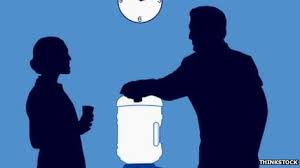Drinking More
to Cope During Covid
Dear Springboard:
I’m concerned about how much some of my colleagues are drinking.
It’s been a worry throughout Covid and especially now with the variants dampening hope and postponing returns to offices and other in-person gatherings.
What can I do?
Sign me,
Not a Teetotaler
Dear NaT:
You have valid concerns.
First, it’s useful to realize that drinking is an integral part of our culture. In normal circumstances, about 70% of adults will report drinking alcohol in the past year and 55% in the past month, according to a study by the National Institutes of Health in 2019.
Further, about 25% report binge drinking in the last month which is defined as four or more drinks in a two-hour period for women and five or more for men.
And drinking comes with a high health cost. “An estimated 88,000 people die from alcohol-related causes annually, making alcohol the third leading preventable cause of death in the United States,” according to the National Institute on Alcohol Abuse and Alcoholism.
Increased drinking during Covid has been reported in different studies. A Kaiser Family Foundation study reports a 13% increase for all adults (and 25% among younger adults).
Two other surveys — one conducted by the American Psychological Association and another by Blue Cross Blue Shield — found that almost 25% of adults reported drinking more to manage pandemic stress.
According to the NIH, reasons for drinking more included increased stress (46%), increased alcohol availability (34%), and boredom (30%). Participants who reported being stressed by the pandemic consumed more drinks over a greater number of days.
Other research has noted increased drinking in response to anxiety, depression, and other mental illnesses.
There has been a dramatic increase in people reporting symptoms of anxiety and depression. A January 2021 study by the Kaiser Family Foundation reported that 41% of those surveyed reported symptoms of anxiety and depression in contrast to 10% in a similar study conducted in 2019 by the NIHS.
What’s more, the incidence of anxiety and depression was highest for the youngest segment (56% for those 18 to 24). The statistics stayed high for the younger segments and trended down with age – 49% of those 25 to 49 reported symptoms.
So, according to this study, about half of those under 50 are struggling. I think of the lockdowns and singles living in extended isolation and married couples with school-age children in living quarters that are tight with everybody home – all the time.
Therapists have never been busier. Many are booked with waiting lists.
Given how pervasive the issues are, it raises the question of how to know if someone has a problem. Here are some signs to look for:
- Inability to cut back
Having to drink more to get drunk
Drinking early in the day
Drinking alone
Memory blackouts
Troubles with or losing – relationships, jobs, money, health
Physical withdrawal symptoms - Some may wonder what impact problem drinking is having on their business.
Here is a link to a calculator developed by The National Safety Council in collaboration with an independent research institution, NORC at the University of Chicago.
This cost calculator is an authoritative, easy-to-use tool providing business leaders with specific information about the cost of substance use (drugs and alcohol) in their workplace based on the size of their employee base, their industry and state.
If you suspect a problem, what can you do about it?
Speak directly with the person you’re worried about: expressing concern, ideally without judgment. Ask how things are going at work and at home to see if their drinking is having any negative consequences like the signs noted above.
It is recommended that we use sentences starting with I, not You. We want to avoid verbally pointing fingers. Ask if they are open to getting help. It’s wise to avoid having this conversation while they are intoxicated; wait until they are sober.
Also, you can consult with, or refer your colleague to, your company’s Employee Assistance professional for guidance. This person might be internal or part of an outsourced company.
Another resource is the National Drug and Alcohol Treatment Referral Routing Service (1-800-662-HELP) to speak with someone about an alcohol or substance use problem.
For a broader effort to reach more employees and also for prevention, wellness programs can be helpful.
While, ironically, participation overall has dropped during Covid according to a 2021 Conference Board survey, the results also showed millennials were the only group that had an increase in wellness programs participation and it was up 8%.
Experts note that the psychological impact of Covid will extend far beyond the period when our day to day lives are interrupted as they are today. There will be an ongoing significant need for care and recovery for a long time to come.
From the Watercooler
springboard

